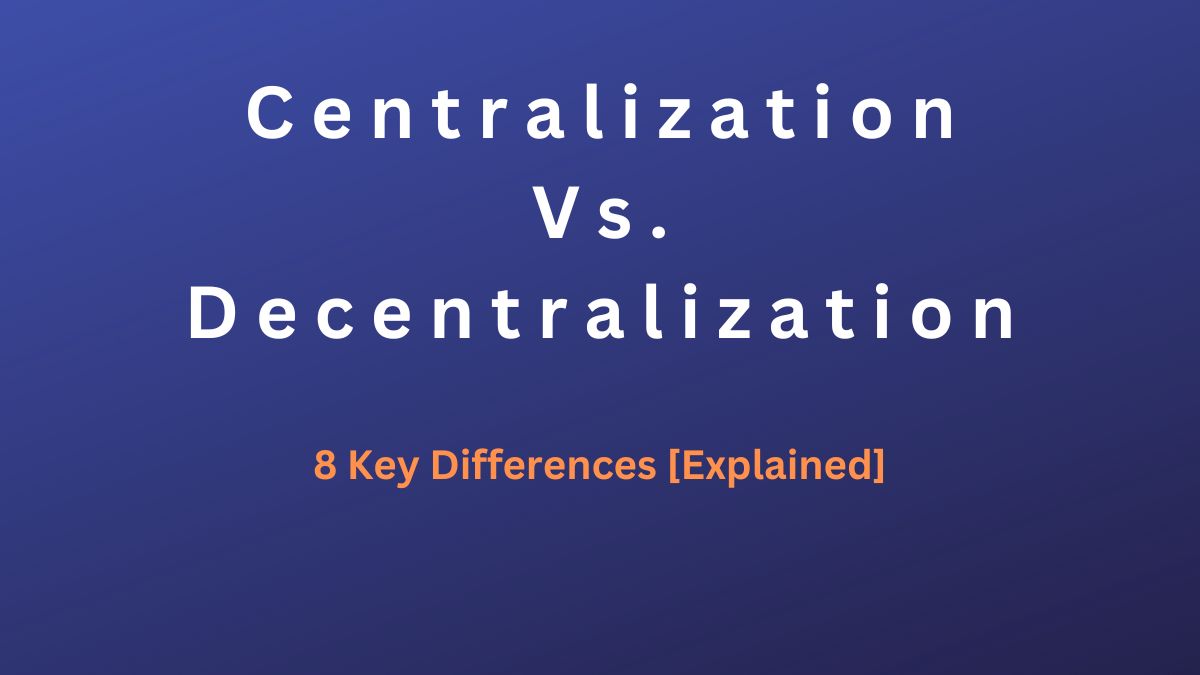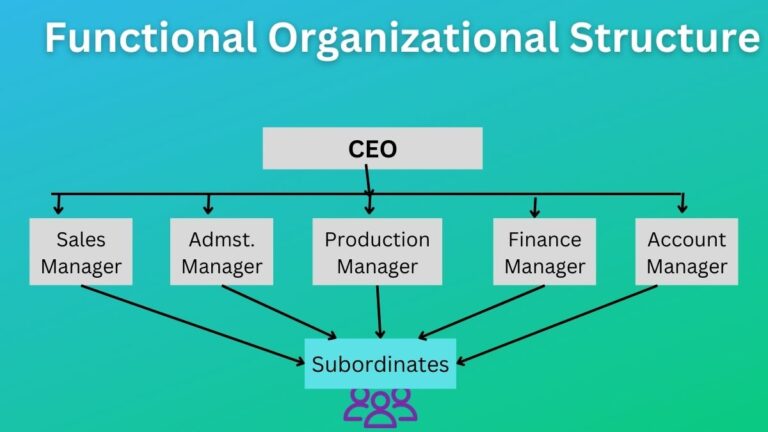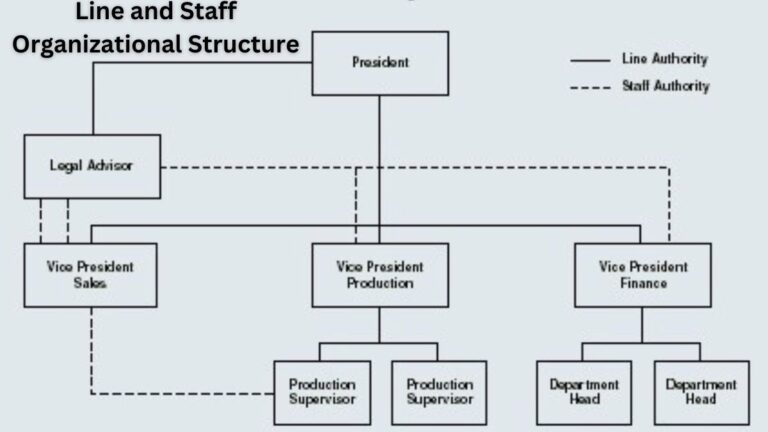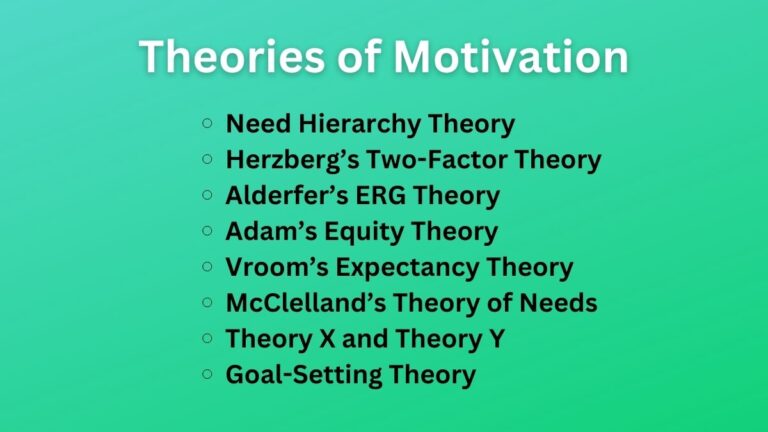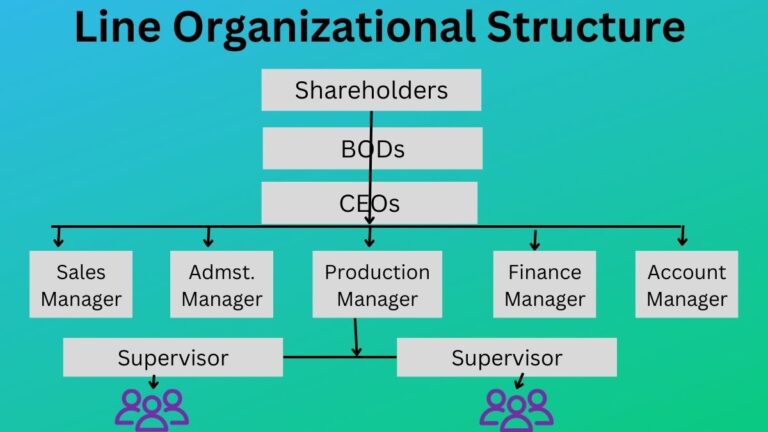Centralization Vs. Decentralization of Authority: 8 Key Differences [Explained]
Centralization Vs. Decentralization
Centralization and decentralization are two types of organizational structures found in organizations, businesses, and management practices. These structures define the ways of distributing authority in the organization.
Where centralization means retaining all decision-making powers at the hand of top-level management only. Whereas, decentralization means distributing the decision-making powers to different middle and lower-level authorities.
Both the centralization of authority and decentralization of authority are widely practiced structures. However, the degree to adopt either a centralized or decentralized structure depends upon the nature, size of the firm, business environment, and attitude of top management.
Both have importance in organizational performance. Let’s discuss individually what centralization is. And, what decentralization is, and the differences between them.
What is Centralization?
Centralization in organizations refers to the practice in which all the decision-making power is vested only in the hands of top-level manager (s). An organization following this management concept has only one authoritative person or very few authorities who have the right to make decisions.
Centralization is also referred to as a traditional way of managing a business. Here, employees have only the duty to follow the command of the manager and implement the plans made by him. The top manager enjoys the sole authority to make decisions.
Vertical communication is practiced in centralized organizations. The top manager sometimes also feels overburdened as along with decision-making power he is solely responsible for the performance, success, or failure of the organization.
Centralization of authority is suitable for the organization aiming to increase efficiency and productivity in the operation. However, it is not so effective in large business organizations.
What is Decentralization?
Decentralization in organizations refers to the practice in which the top-level management has distributed responsibility, accountability, and decision-making powers to the middle and lower levels of management.
It is just the opposite of centralization as it disseminates the top manager’s authority to subordinate authorities. It ensures the delegation of authority to the level where the work is to be done.
Decentralization believes that when an organization expands as well as activities increase the manager should distribute his authority and responsibility to his subordinate level authorities in order to smoothly run the operations. In addition, it states that the authority should be balanced with the responsibility employees have to perform.
Decentralization of authority practices horizontal or free and open flow of communication. It is helpful for employees to expand their professional skills as they get the opportunity to enhance their skills.
Difference Between Centralization and Decentralization
The following are the notable points that differentiate between centralization and decentralization of authority.
Definition
Centralization of authority can be defined as the management practice in which the top position of the managerial hierarchy holds all the decision-making and planning powers in the organization.
On the other hand, decentralization of authority refers to the management practice in which the decision-making and planning powers are distributed among different lower and middle-level authorities or at the level where the work is to be done.
Communication
In centralized organizations, communication flows vertically i.e. from superiors to subordinates. Often, there is one-way communication. Whereas, in decentralized organizations, communication flows horizontally. Employees enjoy the free and open communication system as such they can easily send and receive information from the desired person/position.
Decision-Making
In a centralized structure, only the top manager makes the decision. As he is alone and has to look at activities of all levels this often results in slow decision-making in centralized organizations.
In a decentralized structure, the middle and lower managers also make decisions. Since middle and lower managers are blessed with decision-making rights, it also ensures faster decision-making, it is because as per need and situations, the employees can make decisions on their own.
Suitability
Usually, centralization is suitable for small organizations. And, decentralization is ideal for medium and large businesses.
Workload On Managers
In centralized organizations, since managers have sole authority to make decisions, they also are responsible for all the activities of the organization. They have to look at both routine and strategic activities. Employees are only their followers. This increases the workload of top managers.
On the other hand, the workload of managers in decentralized organizations is less. Since top managers distribute their authority and responsibility to subordinate managers they enjoy a reduced work burden.
Employee Motivation
Since employees’ views, talents, and skills are undervalued or ignored in centralized organizations employees’ motivation and morale are less there. Whereas, in decentralized organizations, employees feel highly motivated as they get a chance to enhance their professional skills.
Delegation of Authority
Delegation of authority is the process in which a superior manager gives some of his authority to his subordinates to perform the given responsibility.
In centralization, the delegation of authority is not possible. Whereas, in decentralization the delegation of authority is possible.
Conflicts in Decision
There is less chance of conflict in decisions as an individual manager makes decisions in a centralized organization. Whereas, in decentralized organizations chances of conflict in decision increase as many heads are involved in decision-making.
Read Next: Styles of Management
Sajan Kushmi is a content writer with more than 4 years of experience. He holds BIM Degree. He write on the topics related to Management, Marketing, and Entrepreneurship.
